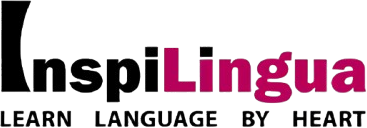Learning Korean Starts with the Right Foundation
When most people think of learning a new language, especially one as seemingly foreign as Korean, the idea can feel daunting. You may picture a complex script, memorization of countless characters, or years of practice just to read a simple sign. But here’s something truly fascinating, the Korean writing system, Hangul, was intentionally created to be easy to learn.
At Inspilingua, where we offer a comprehensive Korean language course in Singapore, one of the first things we introduce to our learners is the elegance and simplicity of Hangul. It’s not just another alphabet, it is a carefully engineered system designed to make language accessible to everyone, regardless of education or social class.
Let’s explore the history, structure, and design principles of Hangul and why it continues to empower language learners around the world.
The Visionary Behind Hangul-
To understand why Hangul is so easy to learn, we must first understand why it was created.
Before Hangul, Koreans used Classical Chinese characters (Hanja) in writing. This system was difficult, time-consuming, and largely inaccessible to the general public. Only the educated elite could read or write.
In the 15th century, King Sejong the Great saw this as a social injustice. He believed that everyone regardless of their class should be able to read and write in their own language. So in 1443, he commissioned a team of scholars to create a brand-new writing system, one that reflected the sounds of the Korean language.
In 1446, Hangul was born.
King Sejong stated:
“A wise man can acquaint himself with them before the morning is over; a stupid man can learn them in the space of ten days.”
This was not an exaggeration. Hangul is designed with scientific precision and phonetic logic, making it one of the most learner-friendly alphabets in the world.
The Structure of Hangul: Simplicity Meets Science
Hangul is made up of 14 consonants and 10 vowels. That’s it. Compare this with the thousands of characters in Chinese or the intricate grammar of Japanese writing systems, and you’ll see why Hangul is such a gift to language learners.
1. Consonants Are Based on Mouth Shape
Here’s where it gets genius.
Hangul’s consonants are designed to look like your mouth, tongue, and throat when you pronounce the sounds.
- ㄱ (g/k) – the shape of the back of the tongue blocking the throat.
- ㅁ (m) – the shape of closed lips.
- ㅅ (s) – the shape your tongue makes behind your teeth.
This design makes Hangul intuitive. You’re not just memorizing symbols—you’re learning how to produce sounds visually.
2. Vowels Are Based on Eastern Philosophy
The vowels in Hangul are rooted in the principles of heaven (•), earth (—), and human (|):
- • (dot) represents heaven
- — (horizontal line) represents earth
- | (vertical line) represents human
Vowel characters are created by combining these symbols. For example:
- ㅣ (i) = human
- ㅡ (eu) = earth
- ㅗ (o) = heaven + earth
Even if you’ve never seen Hangul before, you can start recognizing patterns within minutes. That’s why it’s so effective for beginners, especially those enrolled in a Korean language course at Inspilingua.
Syllable Blocks: A Visual Puzzle
Another unique and accessible feature of Hangul is its syllable block structure.
Instead of writing letters in a line like English, Hangul organizes them into square blocks, each representing one syllable. Each block consists of:
- A consonant + vowel (e.g. 가)
- Sometimes an ending consonant too (e.g. 강)
These syllables always fit neatly into a square, making reading clean and visually consistent.
Example:
Let’s break down the word “한글” (Hangul):
- 한 = ㅎ (h) + ㅏ (a) + ㄴ (n)
- 글 = ㄱ (g) + ㅡ (eu) + ㄹ (l)
This block format makes Hangul not only efficient but also aesthetically pleasing with a perfect balance of form and function.
Why Hangul Is a Language Learner’s Dream
Here are just a few reasons why Hangul stands out as one of the most effective writing systems for new learners:
1. It Can Be Learned in a Single Day
Yes, many students in our Korean language course in Singapore learn to read Hangul in just one class. Because it’s phonetic and rule-based, once you understand the structure, you can read almost any Korean word.
2. Consistency and Predictability
Unlike English, where words like “though,” “through,” and “tough” don’t follow regular rules, Korean pronunciation is extremely consistent. If you know the rules, you can pronounce almost any word correctly.
3. No Ambiguity in Sounds
Each character represents one clear sound. This one-to-one correspondence makes it easy to learn pronunciation and spelling without confusion.
4. Visually Engaging
The block structure of Hangul helps learners see syllables as units. This visual cue makes it easier to identify words, memorize vocabulary, and develop reading fluency faster.
Hangul and Modern Linguistics: Still Ahead of Its Time
Linguists around the world have praised Hangul for its scientific design.
In fact, UNESCO (United Nations Educational, Scientific and Cultural Organization) even created the King Sejong Literacy Prize to honor efforts in promoting literacy named after the very man who created Hangul.
Hangul isn’t just a writing system, it is a symbol of empowerment, education, and equality. And even today, it stands as one of the most brilliant examples of how language can be made inclusive.
Hangul for Absolute Beginners: Where to Start
Give a “starter roadmap” for those completely new to Korean. Example:
- Day 1: Learn basic vowels (ㅏ ㅓ ㅗ ㅜ)
- Day 2: Learn basic consonants (ㄱ ㄴ ㄷ ㄹ)
- Day 3: Combine to read syllables (가 나 다 라)
- Day 4: Form simple words (하나, 학교)
Promote how this is covered in your Korean language course through practical, interactive sessions.
How Inspilingua Makes Learning Hangul Fun and Effective
At Inspilingua, our Korean language course is designed to help students fall in love with the language, starting with its alphabet.
We begin every course with interactive lessons on Hangul, using visual aids, pronunciation drills, and real-world practice to build a strong foundation. Students who used to fear reading Korean signs or menus often say how empowered they feel after just one class.
What Makes Our Hangul Lessons Different?
- Tactile learning: Write, speak, and read from Day 1.
- Cultural insights: Learn how Hangul ties into Korean identity.
- Real-life application: Read signs, order food, and recognize names in Korean by the second week.
Whether you are learning Korean for work, study, travel, or passion, knowing Hangul is the key that unlocks everything and we are here to make that journey enjoyable.
Why Learning Hangul Matters in the Long Run
When you start learning Korean, it is easy to focus on speaking or memorizing phrases. But what many learners overlook is just how powerful it is to be able to read Hangul fluently even if you only know a little vocabulary.
Read subway signs-
Navigating Korean cities like Seoul or Busan becomes so much easier when you can read the names of stations, directions, and exits in Hangul. Although many signs also include English, not all of them do, especially in smaller towns or stations. Knowing Hangul helps you-
- Avoid getting lost
- Understand platform announcements
- Recognize your stop quickly
Recognize menus-
Korean food culture is rich and varied—but most local restaurants only have menus in Korean. Being able to read Hangul allows you to:
-
- Identify dishes like 비빔밥 (bibimbap), 불고기 (bulgogi), or 김치찌개 (kimchi stew)
- Customize your order (spicy, non-spicy, vegetarian)
- Avoid surprises (like ordering raw octopus when you meant chicken!
Understand product labels-
only in Hangul. Knowing how to read:
-
- Ingredients
- Usage instructions
- Product names
can help you make informed choices and avoid mistakes, especially with food allergies or skin sensitivities.
Send a simple text in Korean-
Even being able to write a simple message like:
- 안녕하세요 (Hello)
- 감사합니다 (Thank you)
- 잘 지내세요? (How are you?)
makes a huge impression. It shows effort, respect, and interest in the culture. Whether you’re texting a Korean friend, making a social media comment, or filling out a digital form, knowing Hangul gives you the tools to connect directly.
All of this starts with Hangul.
Even if your vocabulary is still growing, being able to read opens up doors culturally, professionally, and personally. And it boosts your confidence tremendously.
That’s why our Korean course is committed to building that solid Hangul foundation. It’s not just about language it is about access to a whole new world.
Conclusion: The First Step to Mastering Korean Starts with Hangul
The Korean alphabet isn’t just easy, it is a masterpiece of design, philosophy, and linguistic science. Hangul reflects a deep respect for the common person’s ability to learn and grow, and that’s what makes it so special.
At Inspilingua, we honor that legacy by helping students embrace Hangul with confidence and joy. If you’re ready to explore the Korean language and immerse yourself in its rich culture, our Korean course in Singapore is the perfect place to begin.

